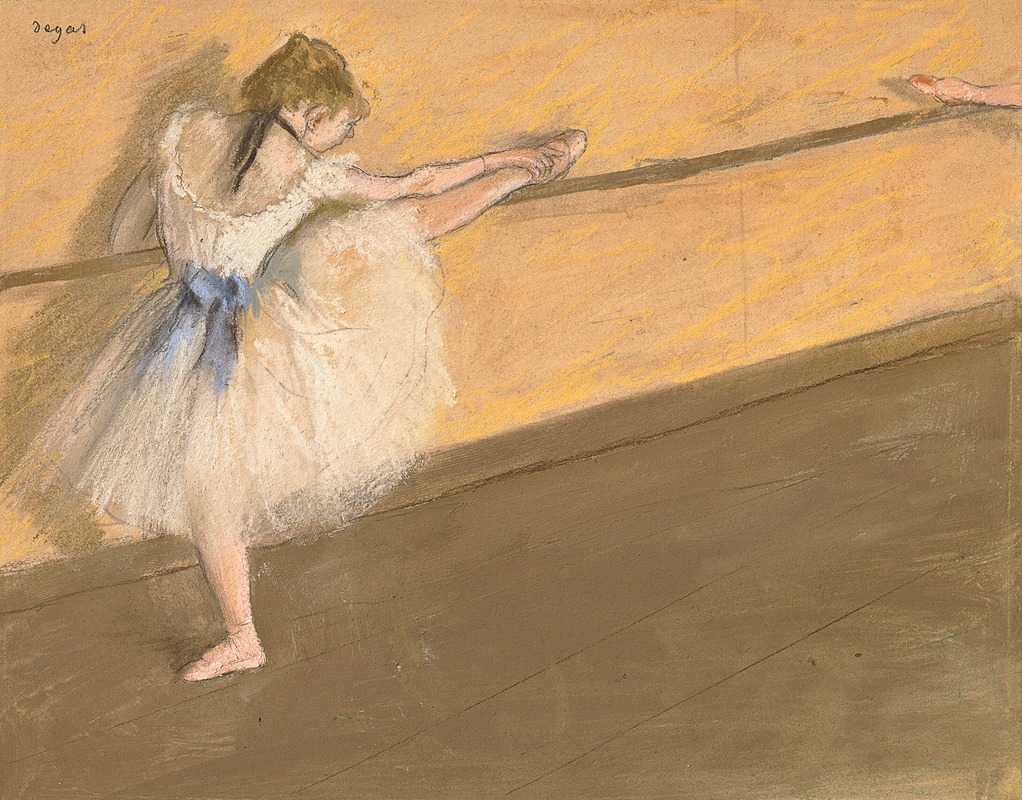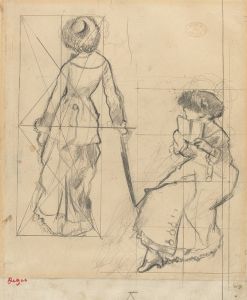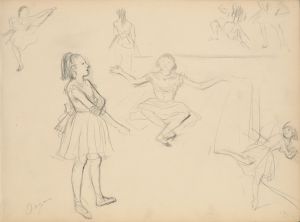
Danseuse à la barre
A hand-painted replica of Edgar Degas’s masterpiece Danseuse à la barre, meticulously crafted by professional artists to capture the true essence of the original. Each piece is created with museum-quality canvas and rare mineral pigments, carefully painted by experienced artists with delicate brushstrokes and rich, layered colors to perfectly recreate the texture of the original artwork. Unlike machine-printed reproductions, this hand-painted version brings the painting to life, infused with the artist’s emotions and skill in every stroke. Whether for personal collection or home decoration, it instantly elevates the artistic atmosphere of any space.
Danseuse à la barre (Dancer at the Barre) is a pastel artwork created by the French Impressionist artist Edgar Degas. Completed around 1880, this piece is one of Degas's many works that focus on the theme of ballet dancers, a subject that became central to his artistic career. Degas is renowned for his ability to capture the grace, discipline, and physicality of dancers, and Danseuse à la barre exemplifies his mastery of movement and form.
The artwork depicts a single ballerina practicing at the barre, a horizontal handrail used for warm-up exercises in ballet. The dancer is shown in a moment of concentration, her body slightly bent as she leans into the barre. Degas's use of pastel in this piece is particularly notable, as it allowed him to achieve a rich texture and vibrant color palette. The soft, layered strokes of pastel create a sense of immediacy and intimacy, drawing the viewer into the quiet, focused world of the dancer.
Degas's interest in ballet was deeply tied to his fascination with the human figure in motion. He often observed dancers during rehearsals and backstage, capturing their movements and postures in sketches that he later developed into finished works. In Danseuse à la barre, the artist's attention to anatomical detail is evident, as is his ability to convey the physical strain and effort required in ballet. The composition emphasizes the dancer's pose and the tension in her muscles, highlighting the discipline and dedication inherent in her craft.
The setting of the piece is minimal, with the barre and the dancer's reflection in a mirror providing the only context. This simplicity directs the viewer's focus entirely on the dancer and her pose. The muted background contrasts with the dancer's brightly lit figure, further emphasizing her presence and the elegance of her movement.
Degas's use of pastel became increasingly prominent in his later works, as he moved away from oil painting. This medium allowed him to experiment with color and texture, and it became a defining feature of his artistic style. Danseuse à la barre is a testament to his skill with pastels and his ability to capture the ephemeral beauty of a fleeting moment.
Today, Danseuse à la barre is celebrated as one of Degas's iconic works, reflecting his deep engagement with the world of ballet and his innovative approach to art. The piece is housed in the Phillips Collection in Washington, D.C., where it continues to be admired by art enthusiasts and scholars alike.


















